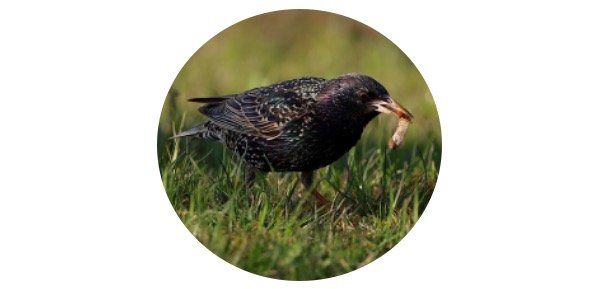12 Plants That Attract Birds (Flowers, Bushes, & Trees)
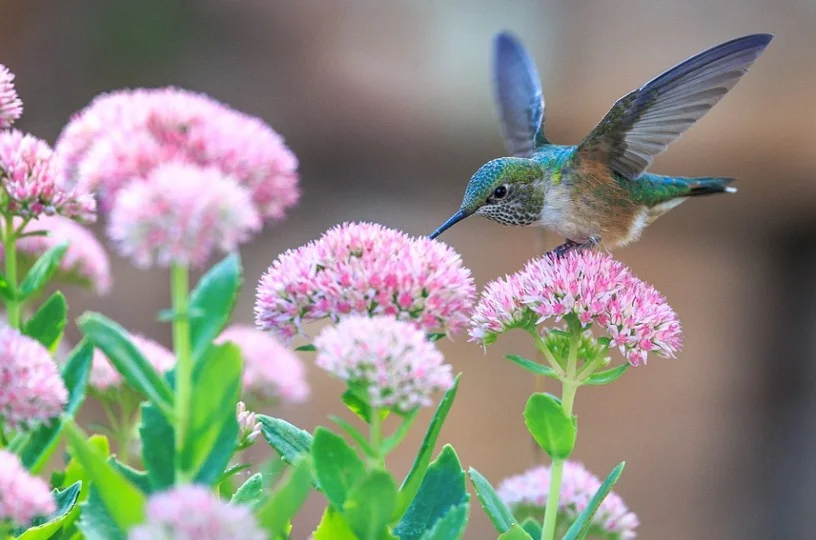
The food availability for the birds started decreasing from autumn till the beginning of spring because of limited food sources due to a drop in temperature. A birdwatcher cannot see any bird during this period, thus the winter season is very awkward for any bird lover.
However, you can add some plants in your garden to attract birds so that your shows will carry throughout the year. In this article, we are providing you with a list of plants that attract birds based on their different distinguishing features.
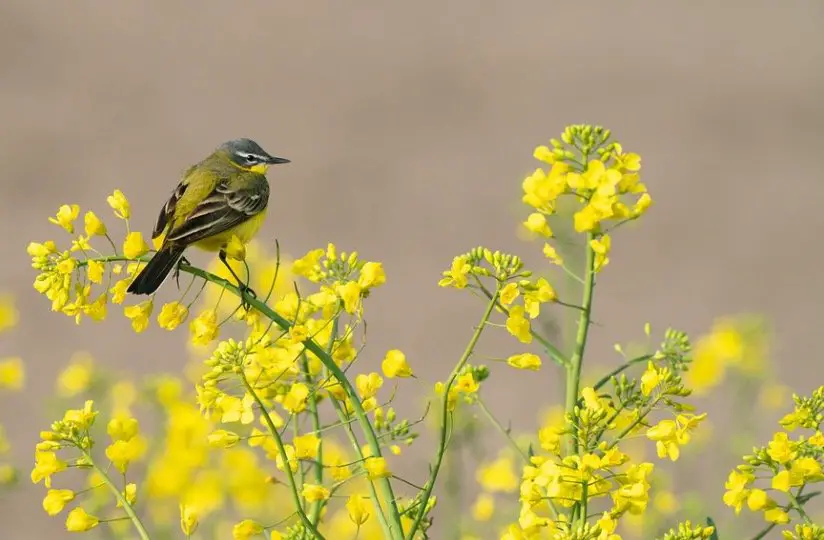
| Plants Name | Attracts Bird Species |
| Mulberries (Morus species) | Robins, waxwings, cardinals, numerous other songbirds |
| Serviceberries (Amelanchier species) | Robins, waxwings, cardinals, vireos, tanagers, grosbeaks, others |
| Flowering dogwood (Cornus florida) | Robins, bluebirds, thrushes, catbirds, cardinals, tanagers, grosbeaks, many others |
| Crabapples (Malus species) | Robins, bluebirds, thrushes, catbirds, cardinals, waxwings, Pine Grosbeaks, finches, many others |
| White oak (Quercus alba) | Woodpeckers, jays, Wild Turkeys, grouse, Wood Ducks, others |
| Eastern red cedar (Juniperus virginiana) | Waxwings and others |
| Spruces (Picea species) | Crossbills and other seed-eaters in fall and winter. Migrating warblers search for insects in spring |
| Wild grape (Vitis species) | Robins, bluebirds, thrushes, catbirds, cardinals, orioles, Wild Turkey, Pileated Woodpecker, mockingbirds, thrashers, many others |
| Virginia creeper (Parthenocissus quinquefolia) | Robins, bluebirds, thrushes, catbirds, cardinals, starlings, Wild Turkey, vireos, warblers, Pileated Woodpecker, many others |
| Northern bayberry (Myrica pensylvanica) | Tree Swallows (especially wintering), catbirds, bluebirds, many others |
| Staghorn sumac (Rhus typhina) | Robins, bluebirds, thrushes, catbirds, cardinals, chickadees, starlings, Wild Turkey, Pileated Woodpecker, many others |
| Red-osier dogwood, gray dogwood, and others (Cornus species) | Robins, bluebirds, thrushes, catbirds, vireos, kingbirds, juncos, cardinals, warblers, Wild Turkey, grouse, others |
| Nannyberry, arrowwood (Viburnum species) | Robins, bluebirds, thrushes, catbirds, cardinals, finches, waxwings, others |
| Winterberry (holly) (Ilex verticillata) | Robins, bluebirds, waxwings, others |
Plants Attract Winter Birds
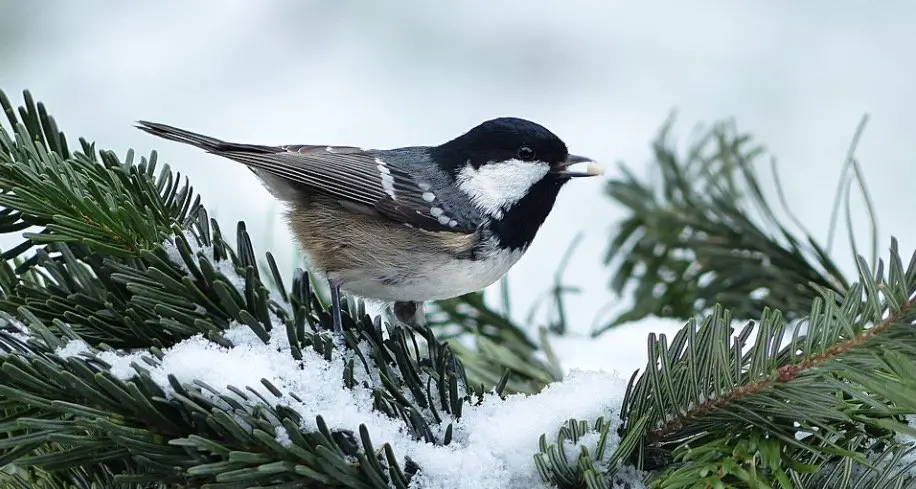
- American bittersweet (Celastrus scandens)
- American cranberrybush viburnum (Viburnum trilobum)
- Arborvitae (Thuja occidentalis)
- Beautyberry (Callicarpa species)
- Black chokeberry (Aronia melanocarpa)
- Blue spruce (Picea pungens)
- Boxwood (Buxus species)
- Firethorn (Pyracantha coccinea)
- Hawthorn (Crataegus)
- Hemlock (Tsuga)
- Holly (Ilex species)
- Red chokeberry (Aronia arbutifolia)
- Serviceberry (Amelanchier species)
- Sumac (Rhus species)
- Winterberry (Ilex verticillate)
Plants Attract Spring Birds
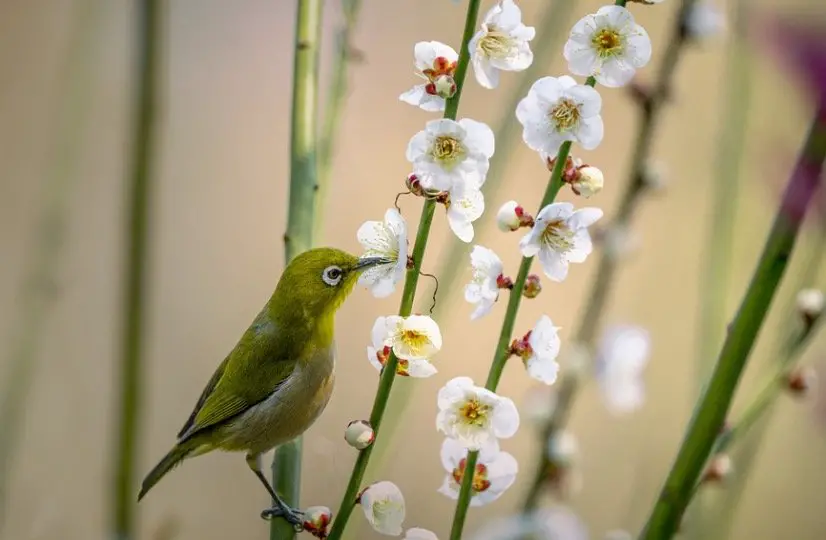
- Bachelor’s buttons (Centaurea cyanus)
- Baptisia (Baptisia)
- Buckeye (Aesculus species)
- Butterfly weed (Asclepias tuberosa)
- Camellia (Camellia)
- Cherry (Prunus species)
- Columbine (Aquilegia)
- Foxglove (Digitalis)
- Fuchsia (Fuchsia species)
- Lupine (Lupinus perennis)
- Phlox (Phlox)
- Pine (Pinus)
- Redbud (Cercis species)
- Red-hot poker (Kniphofia)
- Rhododendron (Rhododendron species)
- Viburnum (Viburnum species)
Plants Attract Summer Birds

- Bee balm (Monarda)
- Black-eyed Susan (Rudbeckia species)
- Blanket flower (Gaillardia x grandiflora)
- Coralbells (Heuchera)
- Coreopsis (Coreopsis species)
- Cosmos (Cosmos bipinnatus)
- Flowering tobacco (Nicotiana alata)
- Liatris (Liatris spicata)
- Penstemon (Penstemon species)
- Primrose (Primula vulgaris)
- Purple coneflower (Echinacea species)
- Salvia (Salvia species)
- Stokesia (Stokesia laevis)
- Trumpet vine (Campsis radicans)
- Yarrow (Achillea species)
- Zinnia (Zinnia)
Plants Attract Fall Birds
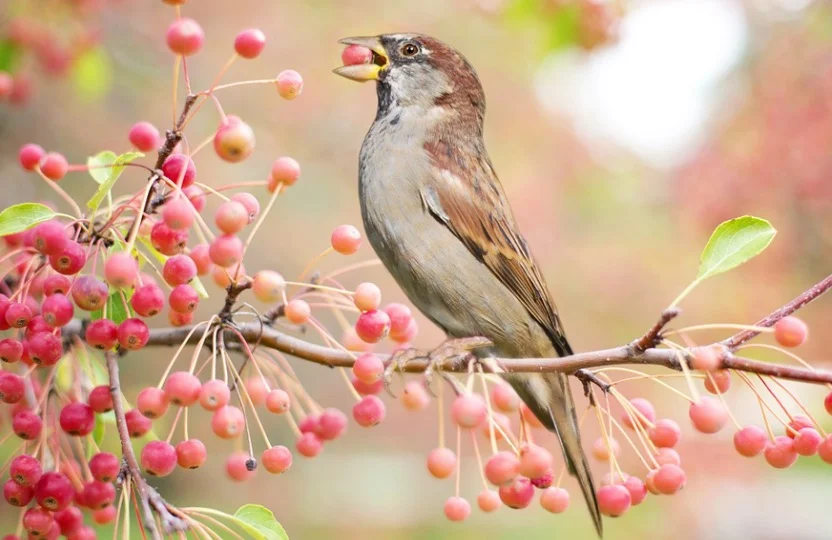
- Aster (Aster species)
- Crabapple (Malus species)
- Dogwood (Cornus species)
- Elderberry (Sambucus species)
- Fountain grass (Pennisetum alopecuroides)
- Four-o’clocks (Mirabilis jalapa)
- Goldenrod (Solidago species) Grape (Vitis)
- Joe Pye weed (Eupatorium purpureum)
- Mahonia (Mahonia)
- Marigold (Tagetes)
- Mountain ash (Sorbus species)
- Nasturtium (Tropaeolum majus)
- Rugosa rose (Rosa rugosa)
- Sedum (Sedum species)
- Sunflower (Helianthus annuus)
12 Plants That Attract Birds (Flowers, Bushes, & Trees)
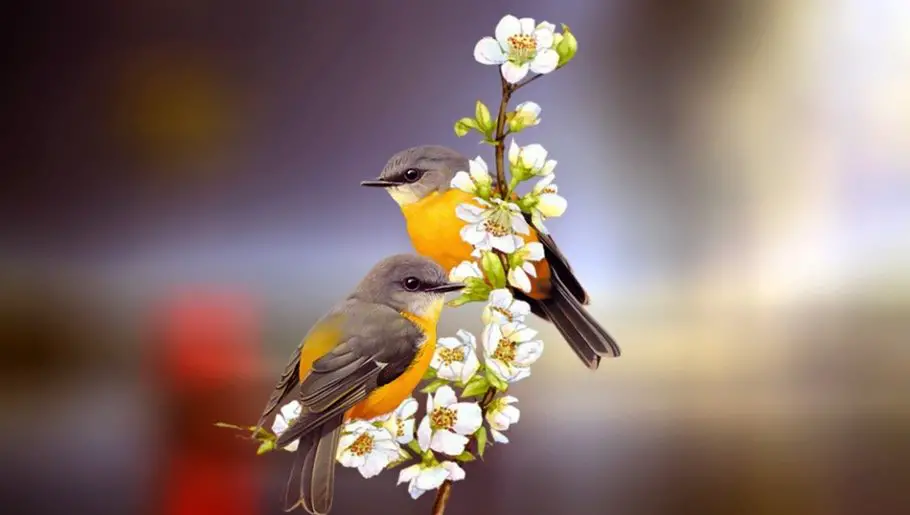
i. Cornflower (Centaurea cyanus)
- Growing season: Spring and early summer
- Birds that love the plant: Mainly songbirds, goldfinches, waxwings, bluebirds, phoebes, and towhees
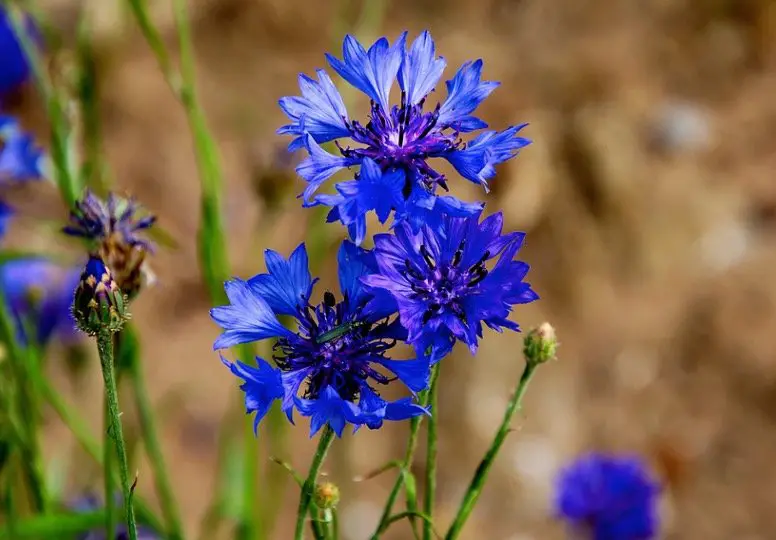
The cornflower is an annual flower that belongs to the family Asteraceae. The plant of cornflower is green-colored that produces blue-colored flowers, which look extremely beautiful. The plants of cornflower can be grown in May, June, and July.
When fully developed, the plant reaches the height of around 90 cm and 30cm in the spread. The plants are suitable to grow at the front of the border of your garden that faces south or west.
A variety of solid types such as well-drained, light, and sandy soils are best for growing cornflowers. The plants are mainly known as backyard plants that can be also grown in heavy, chalky, alkaline, moist soils. The seeds of cornflowers should be sowed in March, April, and May.
The seeds of these plants are also known as the bachelor’s buttons along with the foliage, sap, pollen of the plant provide nourishment to a variety of birds. The plants are also preferred by bees and butterflies to get nourishment.
ii. Elderberry (Sambucus canadensis)
- Season: Spring
- Birds that love the plants: Goldfinches, robins, orioles, waxwings, bluebirds, phoebes, towhees, grey catbirds, house finches, hermit thrushes, buntings, kingles, northern cardinals, flickers, grosbeaks, tanagers, and warblers
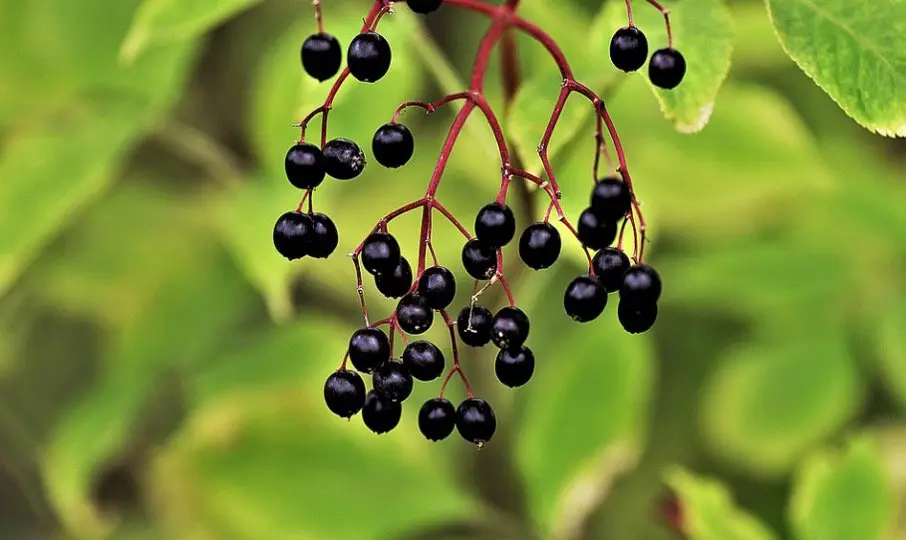
Elderberry is one of the best plants used for attracting birds of various kinds. The plants are grown across the North American continent. The height of the plant is around 5 to 12 feet and normally it spreads to 10 feet.
It is categorized as a shrub and can be grown in March and April. The flowers of elderberry attract insects and after a couple of months, berry clumps are produced in the plants. A wide variety of plants are attracted by these clumps.
Some birds also prefer the plant as a nesting site because the plant is a shrub. A range of bird species are sustained in the versatile shrub of this plant, such as red-eyed vireos and brown thrashers are birds that live in the plant.
The plant produces dark blue-colored fruits, which are loved by the birds. The flowers of elderberry are considered one of the best flowers to attract birds.
iii. Milkweed (Asclepias spp.)
- Season: Late spring to early fall
- Birds that love the plant: All insectivorous birds, and ruby-throated hummingbirds
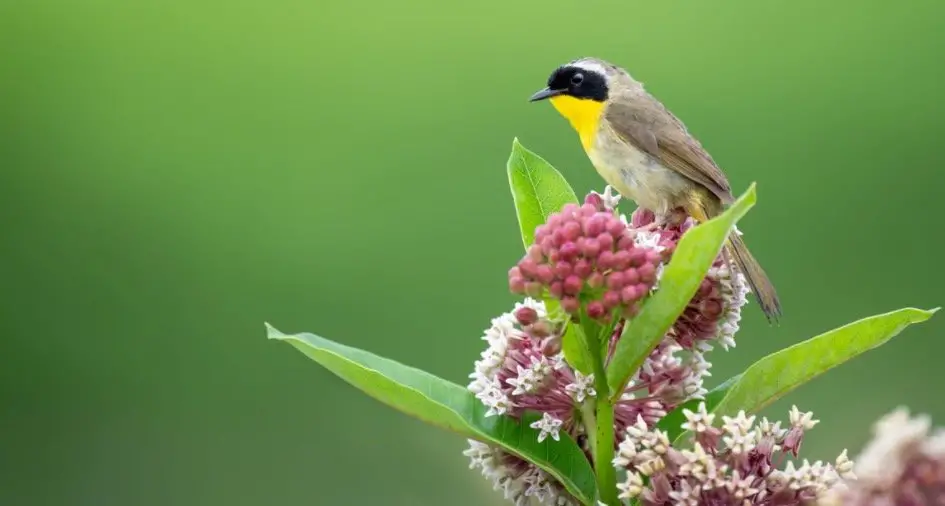
The height of a milkweed plant varies from 1 foot to 8 feet in height. Milkweed is closely associated with the Monarch butterfly and the blooming season of the plant occurs between the late spring to early fall.
The flowers of the plant can attract a variety of insects because of the rich nectar in these flowers. Because of rich in nectar, the plant attracts a variety of insectivorous birds, which stay close to the plant.
Sometimes you will also observe some hummingbirds that come closer to these plants due to the nectar. However, generally, hummingbirds are attracted by other plant species such as the trumpet or tube-shaped plants because their long beak helps them to obtain nectar from tube-shaped flowers.
Table of Contents
iv. Daisy (Bellis perennis)
- Seasons: Early summer to late fall
- Birds that love the plant: Cardinals, towhees, finches, and sparrows.
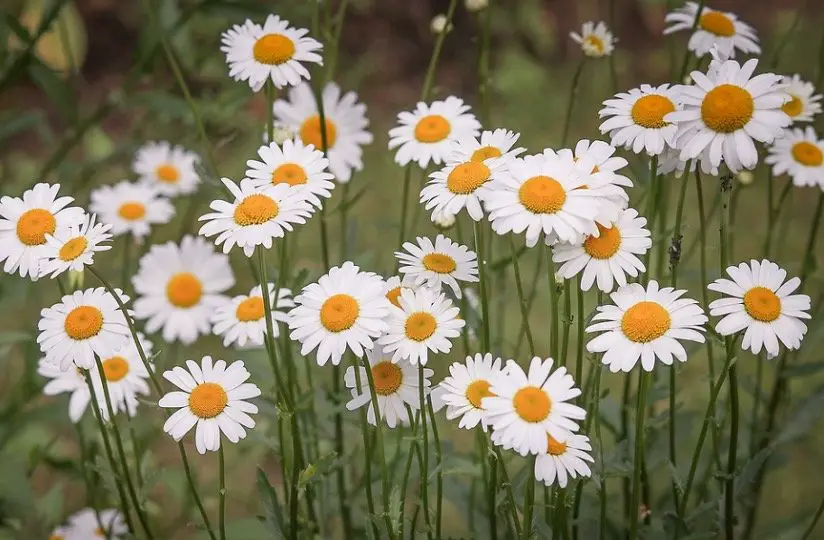
Daisy is considered one of the best plants for birds. Daisies are differentiated into various types but among all, the meadow daisy stands out. The variety of daisies that can be grown throughout the year of the growth is also very fast.
However, the daisies are at their peak during May or early summer. In wild, the plant can be grown almost in any habitat but if cultivated, they are grown between early summer to late fall.
However, the plants can be cultivated in any type of soil but moist soil is preferred for daisies because they reach their peak growth in this soil. As the daisies are seed-bearing plants, they continue to attract birds.
Daisies are also known as a symbol of cheer and joy thus they are one of the favorite plants for gardeners. The seeds of daisy are also highly nutritious and are crucial for the survival of several species of birds during the winter season. Some birds that prefer daisy seeds are cardinals, sparrows, towhees, and finches.
v. Sunflower (Helianthus spp.)
- Season: Early spring to late summer
- Birds that love the plant: All migratory and insectivorous birds
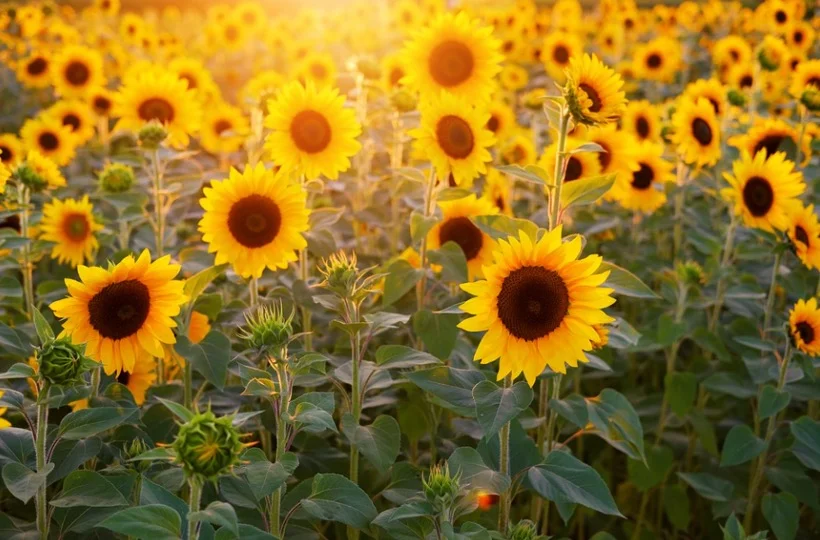
Sunflower is also considered the king of all seed-bearing flowering plants and it is also a great birdseed plant. The plant can be grown easily in full sun or sunny days. The plant can be grown almost in every habitat and anywhere, it can be grown easily right next to the window or in the songbird garden.
Most of the migratory birds obtain fuel from the seeds of sunflower plants. The bees and butterflies also prefer the plant. The birds will eat the seeds of sunflower as well as the nectar of the flowers. A number of insectivorous birds are also attracted by this flower.
However, they can be grown everywhere but the peak time for their growth is during March and April and they grow and produce flowers till late summer. Almost every type of soil is suitable for growing sunflowers easily.
vi. Holly (llex spp.)
- Season: Early spring to early winter
- Birds that love the plant: Song thrushes, redwings, fieldfares, and blackbirds
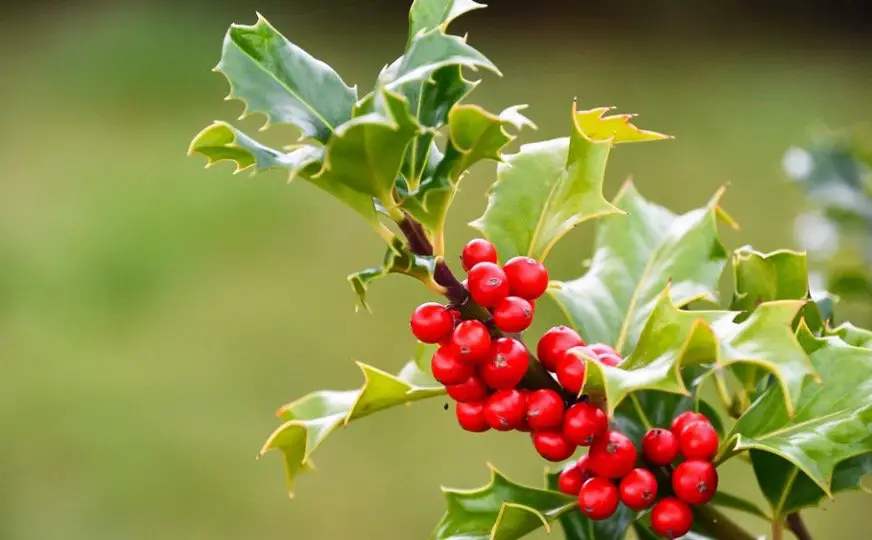
When the autumn comes, the berries of a holly plant are ripe. But the seeds are not eaten by several species of birds such as the redwings, fieldfares, blackbirds, and song thrushers that eat them during late winters.
The berries are produced in the female part of the holly plant but the male part ensures pollination. The color of berries is the bright red color that looks really amazing and nice to the eye. The plants are also preferred to give some aesthetic looks to the garden.
The seeds of a holly plant can be shown during April and May and the moist and damp soil is best for the proper growth and development of these plants. Cultivation of holly plants is quite easy and the procedure is not much complicated such as the position of the plant of exposure to the direct sun etc. thus, it is also commonly found in most home gardens.
vii. Coneflower (Echinacea spp.)
- Season: Throughout the year
- Birds that love the plant: All seed-eating birds
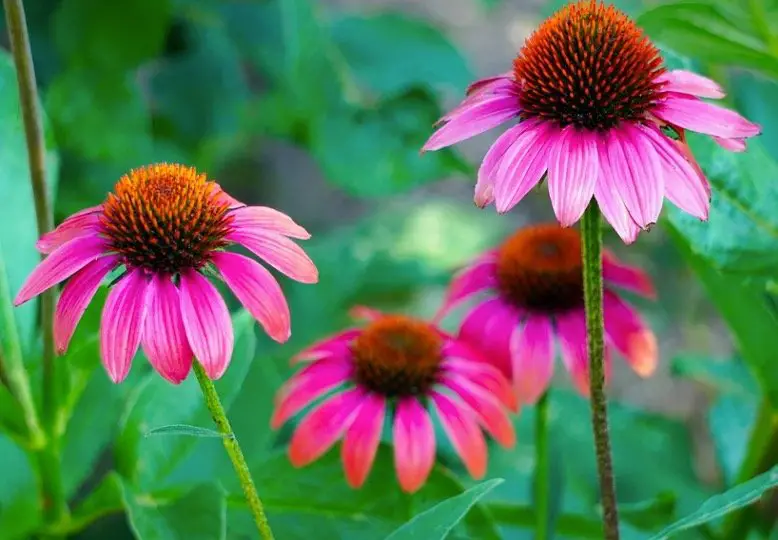
Coneflower is a hardy plant and perennial shrub. The blooms of the plant are long-lasting and have tall stalks. The seeds of the plant are bristly and are rich in nutrition thus they are preferred by several species of bees and butterflies.
Many seed-eating birds also prefer the coneflowers. A vast species of birds are also attracted by the flowers during their bloom. The plant is perennial thus it can bloom almost every season even in tough times of winters.
The plant is preferred by gardeners due to its long-lasting nature. It also provides a food source for many birds and butterflies thus it ensures the visit of colorful birds from each corner. The cultivation of coneflower is also very easy, but the plant should be grown in alkaline soil to keep the growth of the plant maximum.
viii. Cardinal Flower (Lobelia cardinalis spp.)
- Season: Early spring till late autumn
- Birds that love the plant: Different songbirds, hummingbirds
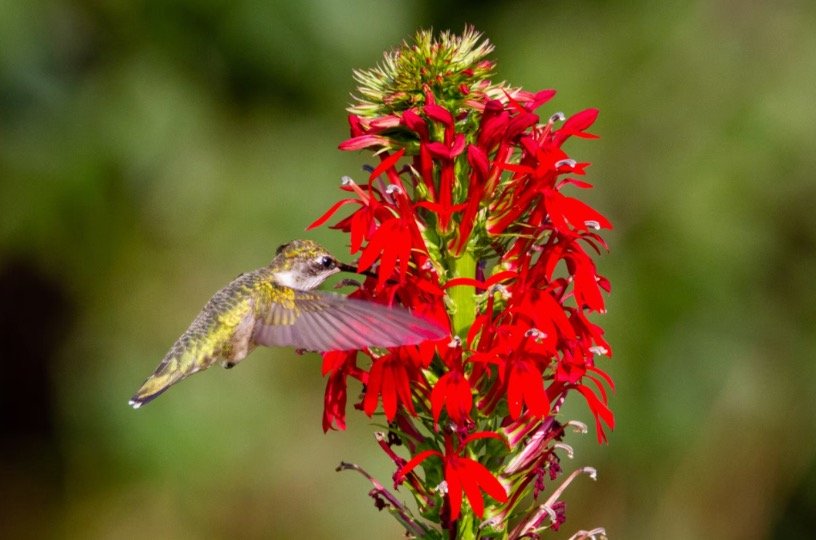
The Cardinal flower is a member of the bellflower family. The height of the plant is around six feet and it produces red-colored flowers that are around 8-inch in length. Hummingbirds usually feed on the nectar of these plants, thus they provide a food source for these plants.
Hummingbirds also help in the pollination of these plants. In the autumn season, foliage is produced in these plants, and a lot of small songbirds are attracted due to this. Thus cardinal flower ensures a reliable food source for the birds.
The plant is a herb, so proper care is required for its better growth. It cannot grow in direct exposure to the sun, but it requires partial rays for proper growth. The plants are very delicate and useful for attracting plants.
ix. Cotoneaster (Cotoneaster spp.)
- Season: Early autumn onwards
- Birds that love them: Blackbirds, waxwings, robins, bullfinches, blackcaps, and thrushes
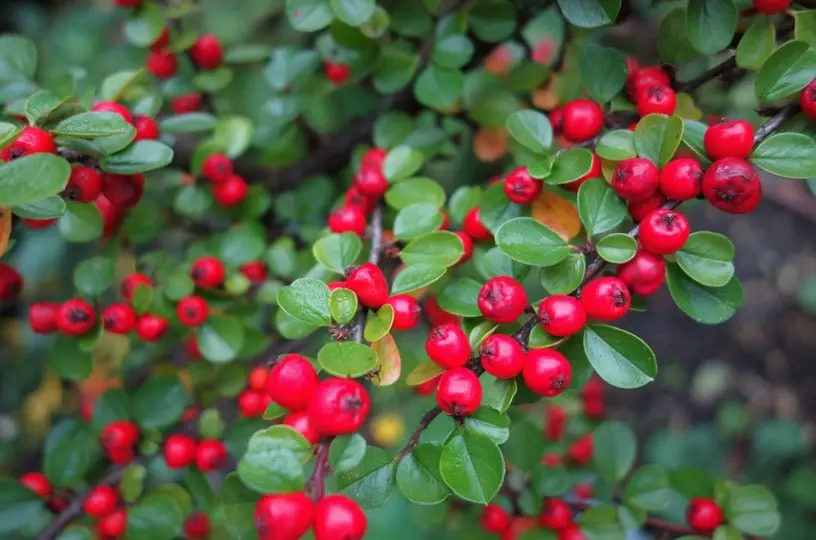
Cotoneasters are shrubs that are very useful for attracting birds and also serve as a food source for various birds. Some birds also find shelter in these shrubs. The plant produces small red berries, which ripe during early winters and provide food to birds.
There are several species of birds that rely on these berries for their food and the plant is very popular among the birds. Some birds are waxwings, thrushes, and blackbirds, which feed on these berries.
The heavy, damp, and even alkaline soil is suitable for the cultivation of cotoneaster plants. The plants are also helpful for attracting robins, bullfinches, and blackcaps. The plants are also long-lasting and properly cared for, they continuously bear fruits.
x. Marigold (Tagetes spp.)
- Season: Late winter to early summer
- Birds that love the plants: Blackbirds, sparrows, robins, thrushers, and bluebirds
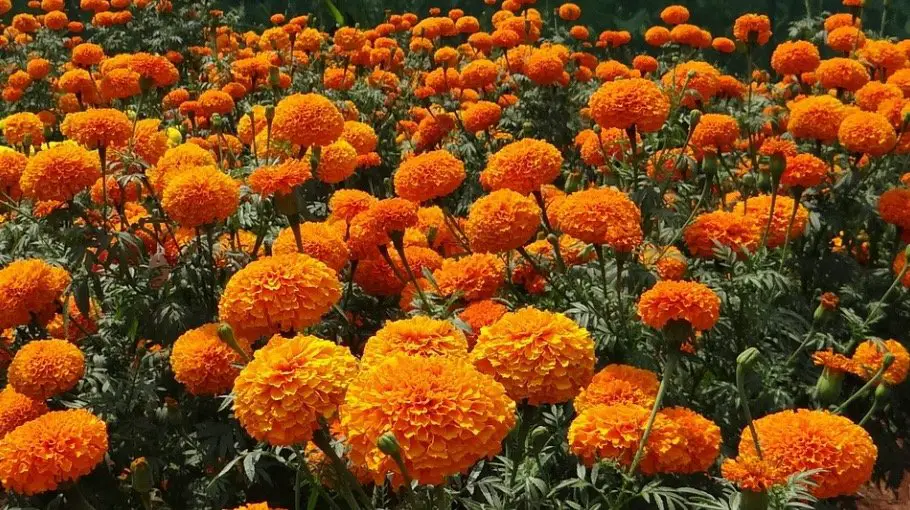
Marigolds are also annual flowers and many bird species feed on the seeds of these flowers. Sometimes, the flowers are torn by crows and grackles thus they need proper care because these birds can destroy flowers and food sources of other bird species.
Bees and butterflies are also attracted by these plants thus they also attract several insectivorous birds. The cultivation of marigolds is very easy and the flowers are also long-lasting.
Usually, the flowers start blooming from the end of the winter and it blooms all the way to summers. If they are watered properly and not exposed to direct sunlight, they can easily survive in a bit of heat.
xi. Dogwoods (Cornus spp.)
- Season: Spring to autumn
- Birds that love the plants: Robins, hummingbirds, and several insectivorous birds
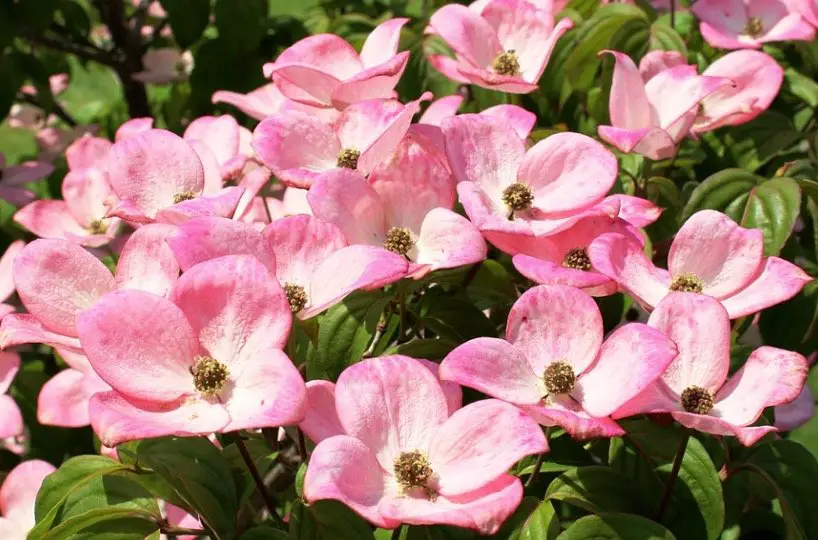
After proper care, a dogwood plant can turn into a small tree and can grow very well. Many birds make their shelter in this plant and it also attracts a variety of birds.
The plant is also preferred by most gardeners as an ornamental plant because a lot of showy white flowers are produced in the plant looks really nice. The height of the plant may reach up to 15 to 40 inches after which it starts flowering.
Several moth and butterfly species are also attracted towards the plant and it serves as a heaven for a number of insectivorous birds. The plant produces red-colored fruits that will mature in the fall and serve as a food source for visiting birds.
The flowers are loved by robins and hummingbirds and during fall when its leaves turn red, it gives a lovely backdrop for photography.
xii. Oak (Quercus spp.)
- Season: Year-long
- Birds that love the plant: Flickers, tanagers, titmouse birds, warblers, nuthatches, woodpeckers, orioles, grosbeaks, etc.
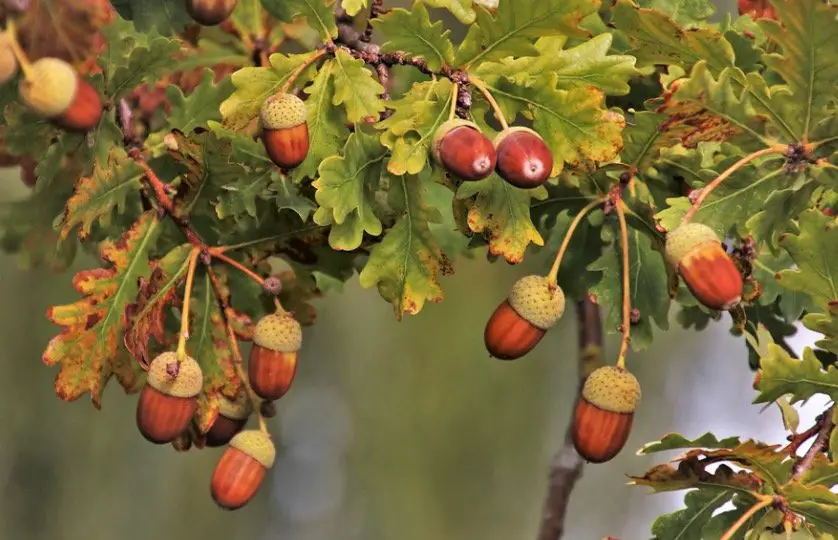
Oak is one of the best species to attract birds. The plant has great significance in wildlife and birds in particular. It is a tree that grows up to the height of 50 to 900 feet and can spread up to 40 to 80 feet.
Around 500 species of caterpillars and a number of insect varieties get shelter in oak trees. Several arthropods, beetles, and aphids live in the tree. Acorn is produced by an oak tree that provides food for several birds such as woodpeckers and blue jays in winter.
Besides providing a better food source, the plant also serves as a nesting site and breeding ground for the birds. Many birdwatchers can start their season by observing an oak tree.
